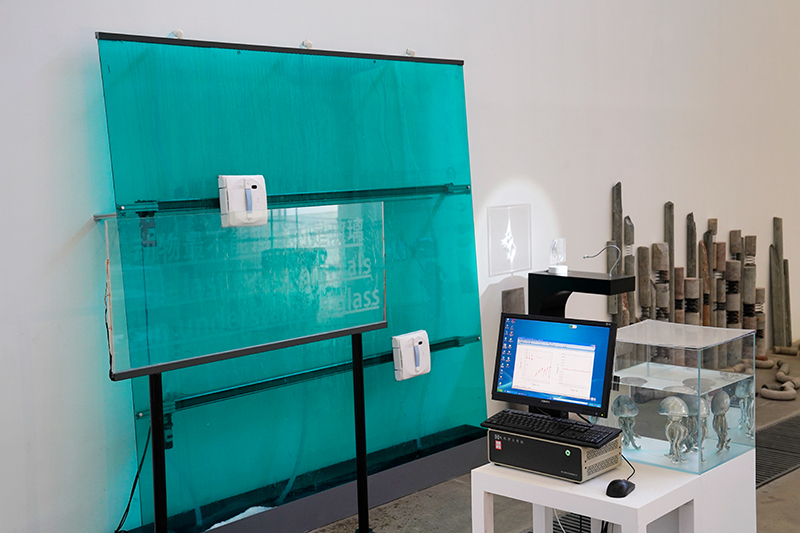 |
Glass Transformation |
||||||||||||||||||||||||||||||||||||||||||||||||||
|
The glass jellyfish sculpture is coated with an electrochromic film, a development of Professor Zhang Chenguang's team from the School of Materials Science and Engineering at Tianjin University of Technology. The sculpture is entirely submerged in an electrolyte solution and connected to an infrared sensor. Upon the approach of a spectator, the glass jellyfish sculpture turns into gold. A pane of electro-controlled frosted glass, with patches of transparency and alternating currents, reveals the phrase, “The last thing an animal can understand is glass.” Electrochromic glass, invented in the 1980s by researchers at Kent State University in the United States and subsequently patented, was brought into mass production in 1991 by Polytronix, Inc., based in Texas. An electric current is utilized to alter the distribution of electrons within the liquid crystal layer of the glass. When the electrons are neatly aligned, light can penetrate freely, rendering the glass transparent. A glass with caustic imaging mounted on a rotating base projects the silhouette of a conch with cross-sectional clarity onto the wall through the illumination of light. In optics, the phenomenon of caustics—the envelope of light rays refracted or reflected by a curved surface or object—underpins this effect, akin to the principle by which Han Dynasty bronze mirrors cast images of their reverse patterns through light and shadow. Two large panes of glass are inclined against the wall, with blue-green seawater teeming with algae cascading from above. Four glass-cleaning robots execute repeated horizontal and diagonal movements, propelling the water into a visual semblance of ocean waves. A sump at the base, equipped with a water pump and glass tubing, circulates the water in an endless loop.
|

